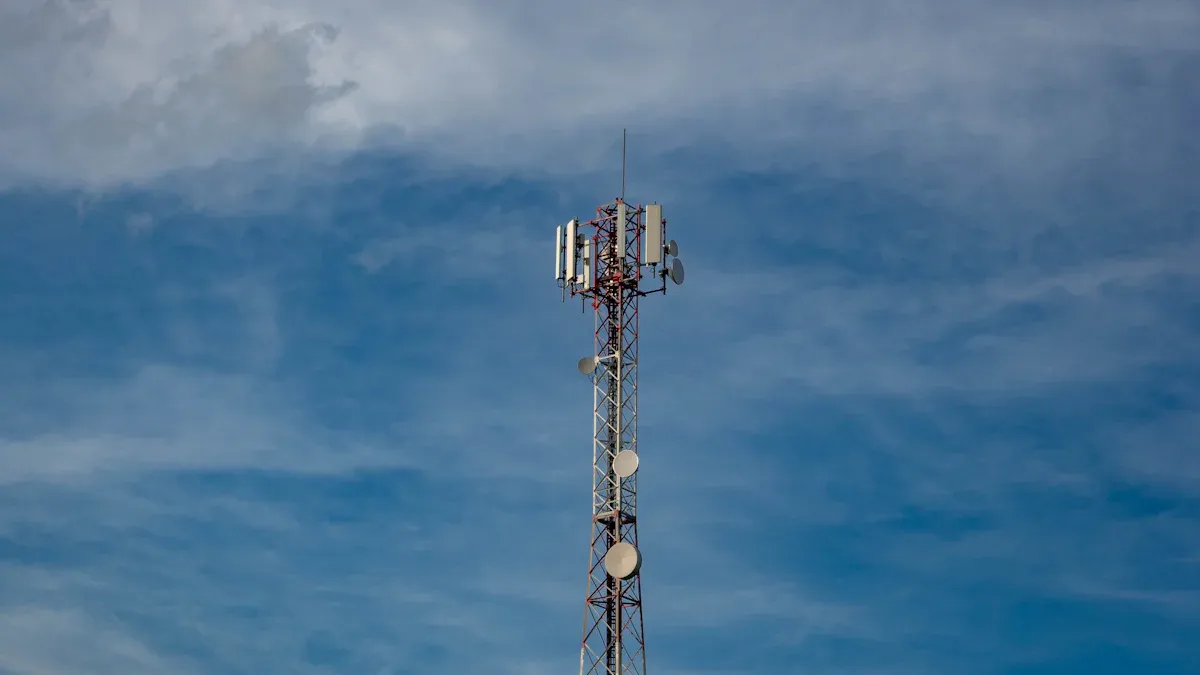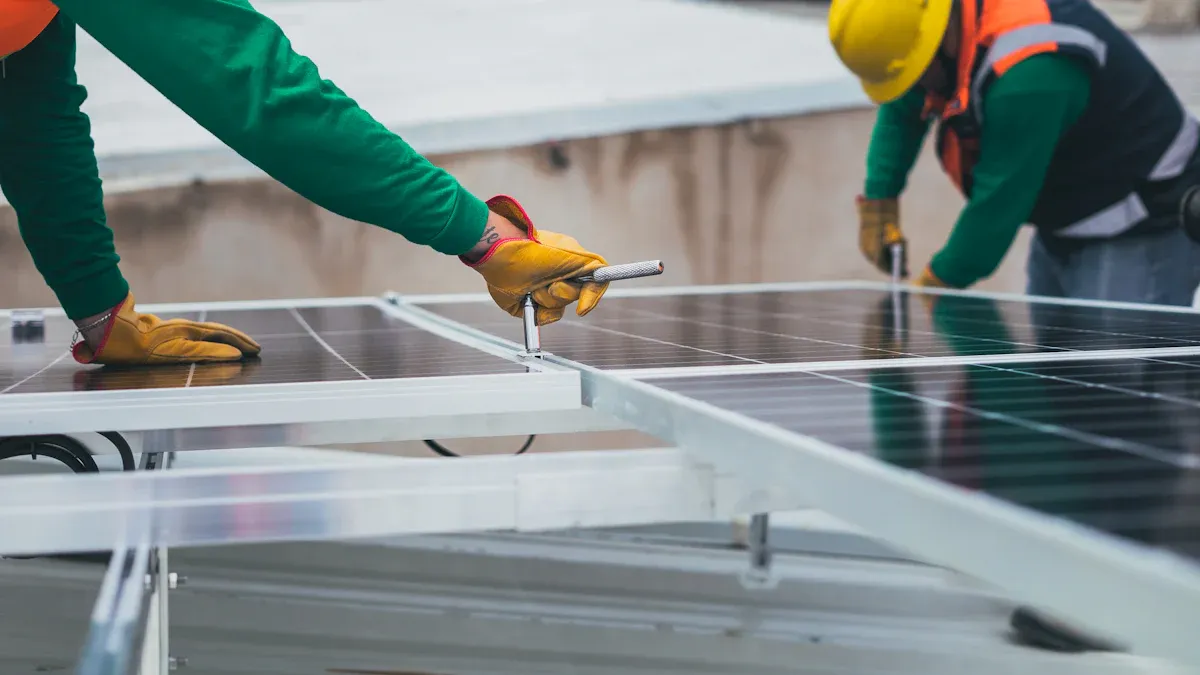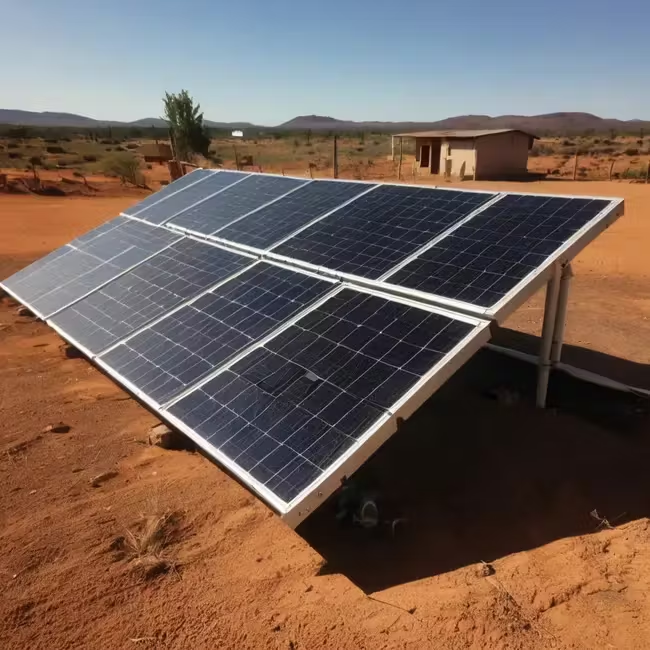How ESTEL PV Panels Power Modern Telecom Cabinets

ESTEL PV Panel systems deliver dependable electricity by converting sunlight into power for telecom cabinets. Many telecom operators face challenges with reliability, efficiency, and rising operational costs, especially at remote sites. Solar technology offers a practical solution that reduces energy expenses while supporting critical communications infrastructure. Users benefit from steady performance, minimal maintenance, and long-term savings.
Key Takeaways
ESTEL PV Panel systems provide reliable, clean power for telecom cabinets, especially in remote areas, reducing downtime and operational costs.
High-quality components like lithium-ion batteries, MPPT controllers, and safety devices ensure efficient energy storage, conversion, and system protection.
Proper system sizing and installation, including optimal panel angles and professional setup, maximize energy output and long-term performance.
Hybrid integration with solar, wind, and backup generators boosts reliability and cuts fuel costs while supporting sustainable telecom operations.
Regular maintenance, such as cleaning panels and monitoring batteries, keeps the system efficient and extends its lifespan.
PV Panel System

Modern telecom cabinets rely on a well-integrated PV Panel system to ensure continuous, efficient, and safe power delivery. Each component in the system plays a critical role in supporting telecom operations, especially in remote or off-grid locations.
Main Components
A typical PV Panel system for telecom cabinets includes several essential parts:
PV Panels: These panels convert sunlight into direct current (DC) electricity. High-quality PV Panels from ESTEL offer robust performance and durability, even in harsh environments. They serve as the primary energy source for telecom equipment.
Batteries: Energy storage is vital for maintaining power supply during periods without sunlight. Batteries store excess energy generated by the PV Panels and release it when needed.
MPPT Controllers: Maximum Power Point Tracking (MPPT) controllers optimize the energy harvested from PV Panels. They adjust the operating point to maximize efficiency and minimize energy loss.
Inverters: Inverters convert DC electricity from the PV Panels and batteries into alternating current (AC), which many telecom devices require.
Monitoring Systems: These systems track performance, detect faults, and provide real-time data to operators, ensuring proactive maintenance and system reliability.
Safety Devices: Circuit breakers, fuses, and surge protectors safeguard the system against electrical faults, overcurrent, and voltage spikes.
A well-designed PV Panel system integrates these components seamlessly, ensuring telecom cabinets receive stable and reliable power at all times.
Battery Storage
Battery storage forms the backbone of reliable telecom power, especially in off-grid scenarios. The choice of battery technology directly impacts system performance, maintenance, and lifespan.
Telecom PV Panel systems commonly use:
Lithium-ion batteries (including lithium iron phosphate, or LFP)
Lead-acid batteries
Lithium-ion batteries offer high energy density, long lifespan, and low maintenance. LFP batteries, a subtype, provide enhanced safety and can handle deeper discharges. Their typical lifespan ranges from 15 to 20 years, with 6,000 to 10,000 cycles before significant capacity reduction.
Lead-acid batteries remain more affordable but require regular maintenance and have shorter operational lives.
Feature | Lithium-Ion Batteries | Lead-Acid Batteries |
|---|---|---|
Cycle Life | Shorter lifespan | |
Energy Density | High (up to 250 Wh/kg) | Lower |
Charging Speed | Faster | Slower |
Maintenance | Low | Higher |
Weight & Volume | Lighter, smaller | Heavier, bulkier |
High-capacity lithium-ion batteries ensure uninterrupted power for telecom cabinets during outages. Their high energy density and long cycle life enable extended backup times, which is crucial for continuous operation in remote or off-grid locations. When paired with PV Panels, these batteries store excess solar energy and deliver stable power during periods of low sunlight or high demand. Accurate sizing and efficient design further enhance reliability and scalability, reducing downtime and operational costs.
Controllers and Safety
Controllers and safety devices protect both the PV Panel system and the telecom equipment it powers. MPPT controllers play a pivotal role in maximizing energy conversion efficiency. They identify the optimal power point for PV Panels, allowing the system to capture more sunlight and generate more electricity with minimal loss. These controllers support a wide range of voltages and power levels, making them suitable for various telecom applications. Their robust construction ensures durability in challenging environments, while user-friendly monitoring features simplify management.
Safety standards and certifications are essential for controllers and safety devices in PV Panel systems. The following table outlines key standards and their relevance:
Safety Standard | Scope and Relevance | Key Safety Requirements for Controllers and Safety Devices |
|---|---|---|
IEC 61508 | Functional safety of electrical/electronic/programmable systems | Safety-critical software testing, real-time monitoring, self-diagnostics, fault detection, SIL compliance |
UL 508 | Industrial control equipment safety and reliability | Component ratings, overvoltage/overcurrent protection, thermal management, design verification |
IEC 62368 | Safety for communication, IT, and audio/video equipment | Hazard-based risk assessment, insulation, creepage distances, isolation barriers |
IEC 62109 | Safety of power converters for photovoltaic systems | Isolation standards, protection against high voltage risks |
IEC 60950 | Safety of IT equipment | Insulation, creepage, clearance, thermal limits |
IEC 61010 | Safety for electrical measurement and control equipment | Overvoltage/overcurrent protection, thermal management, fault detection |
Controllers and safety devices must include real-time monitoring, self-diagnostics, and overvoltage protection. Proper thermal management and isolation barriers prevent hazardous conditions. Compliance with these standards ensures the PV Panel system operates safely and reliably, protecting both equipment and personnel.
How It Works

Energy Generation
Telecom cabinets depend on efficient energy generation to maintain uninterrupted service. ESTEL PV Panel systems harness sunlight and convert it into usable electricity through advanced photovoltaic technology. The efficiency of these panels plays a crucial role in maximizing energy output and supporting telecom operations.
ESTEL PV Panel efficiency increases total energy generation by using optimized panel selection, such as polycrystalline cells that deliver high performance and cost-effectiveness.
Proper installation, including tilt angles between 20° and 30°, ensures maximum solar capture. Studies show that optimal angles around 27.6° to 27.95° provide the best results for similar latitudes.
Integrated monitoring systems track real-time performance and enable predictive maintenance, reducing energy loss.
High-efficiency panels, paired with energy-efficient rectifiers and AI-driven battery management, improve system reliability and reduce downtime by about 25%.
These improvements lead to significant cost savings—up to 49% compared to diesel generators—and lower carbon emissions by around 40%.
The scalable design of ESTEL systems allows telecom operators to expand energy generation as network demands increase, ensuring continuous and efficient cabinet operations.
Tip: Regular cleaning and maintenance of PV Panels help maintain peak efficiency and maximize energy production.
Storage and Delivery
Storing solar energy efficiently is essential for telecom cabinets, especially during periods of low sunlight or at night. ESTEL systems use advanced battery storage solutions to ensure reliable power delivery.
Lithium-ion batteries provide longevity and high efficiency for storing excess solar energy.
Charge controllers and inverters manage energy flow and convert DC to AC power for telecom equipment.
Battery Management Systems (BMS) protect batteries from overheating and extend their lifespan.
Properly sized battery storage systems match energy consumption needs, ensuring efficient operation.
Continuous monitoring of system performance helps optimize both energy production and consumption.
Stored energy supports telecom equipment during low sunlight or nighttime by releasing electricity from batteries. These storage systems capture excess electricity generated during the day and discharge it when solar production drops. This process balances electricity loads and provides resilience, allowing critical telecom services to operate without interruption.
Note: Regular battery inspections and cleaning of PV Panels further enhance system reliability and efficiency.
Hybrid Integration
Hybrid integration combines renewable energy sources, such as solar and wind, with conventional power systems like diesel generators. This approach ensures a reliable and efficient energy supply for telecom cabinets, especially in remote or off-grid locations.
Aspect | Explanation |
|---|---|
Advantages | Improved energy efficiency and reduced operational costs through optimized system sizing and hybrid configurations. |
Challenges | Space and structural constraints at telecom sites. |
Solutions | Use compact, modular solar panel designs. |
Supporting Data | Hybrid systems can reduce battery capacity requirements by 54–77% and renewable energy waste by up to 79%. |
Hybrid integration increases system uptime and reliability. Redundant power paths allow seamless switching to conventional sources when renewable energy is insufficient, reducing downtime. ESTEL’s hybrid solutions feature rectifier modules with over 95% efficiency and remote monitoring capabilities. These features minimize downtime and enhance reliability. Case studies report a 40% reduction in service disruptions after implementing hybrid systems with advanced monitoring. Backup batteries and switched PDUs further stabilize power supply, contributing to 25% better reliability and 15% less downtime.
Hybrid integration ensures 100% power availability by combining renewable energy with battery storage, supporting uninterrupted telecom operations and sustainable infrastructure.
Benefits
Reliability
Telecom operators require consistent power to maintain network uptime. ESTEL PV Panel systems deliver high reliability by providing stable electricity, even in remote or off-grid locations. Advanced battery storage and intelligent controllers ensure that telecom cabinets continue to operate during periods of low sunlight or grid outages. Hybrid integration with backup generators further increases system resilience. Operators benefit from real-time monitoring, which allows for quick detection and resolution of faults. This proactive approach minimizes downtime and supports uninterrupted communication services.
Cost Savings
Switching to solar power offers significant financial advantages for telecom infrastructure. Operators often compare the initial investment and long-term expenses of PV Panel systems with traditional diesel generators. The following points highlight key cost considerations:
Solar PV panel systems, including ESTEL models, require a higher upfront investment than diesel generators.
The typical payback period for solar systems ranges from 3 to 6 years, depending on system size, local energy prices, and available incentives.
Diesel generators have lower initial costs but generate ongoing expenses for fuel and maintenance.
Solar systems reduce operational costs over time by minimizing fuel consumption and maintenance needs.
Combining solar panels with battery backups and generators enhances reliability and justifies the higher initial investment.
Many users report that, despite a delayed return on investment, solar solutions provide better long-term savings compared to diesel generators.
Operators who invest in solar solutions see reduced energy bills and lower maintenance costs, which improves the total cost of ownership over the system’s lifespan.
Sustainability
Sustainability remains a top priority for modern telecom networks. Using ESTEL PV panels for powering telecom cabinets results in an estimated 40% reduction in carbon emissions compared to conventional energy sources such as diesel generators. This significant decrease demonstrates the environmental benefits of solar power, which reduces greenhouse gas emissions and supports global decarbonization goals. ESTEL’s solar power systems not only enhance sustainability but also provide reliable and cleaner energy for telecom infrastructure. Operators who adopt solar solutions contribute to a greener future while meeting their operational needs.
System Sizing
Power Needs
Accurate power needs assessment forms the foundation of a reliable telecom solar system. Operators should start by calculating the total energy consumption of all telecom equipment, including base transceiver stations, cooling units, and backup systems. This calculation involves multiplying each device’s wattage by its daily operational hours.
Several factors influence power requirements:
Geographic location impacts sunlight availability. Remote sites with limited grid access may need larger battery storage.
Seasonal variations, such as extended rainy seasons or frequent cloud cover, can reduce solar output. Higher-capacity batteries help maintain service during these periods.
A recommended 20% buffer covers unexpected increases in power demand or reduced solar production.
ESTEL PV panels maintain consistent power output despite harsh weather, thanks to robust materials, anti-reflective coatings, and high wind and snow load capacities.
Sizing PV Panels
Proper sizing of the PV Panel array ensures the system meets energy demands year-round. Operators should consider both average daily energy consumption and the lowest expected sunlight levels. Environmental conditions, including temperature and weather, affect panel efficiency. High temperatures may reduce output, while cloudy days limit sunlight.
A typical sizing process includes:
Calculate daily energy needs in watt-hours.
Divide this value by the average daily sunlight hours for the site’s location.
Add a safety margin to account for seasonal and geographic variations.
Selecting high-efficiency panels with advanced features, such as multi-layered cells and anti-reflective coatings, maximizes energy capture even in low-light conditions. ESTEL panels undergo rigorous testing to ensure reliable performance in all climates.
Installation Tips
Professional installation maximizes system performance and longevity. Operators should:
Use certified installers with credentials like NABCEP.
Ensure compliance with local regulations and secure necessary permits.
Choose mounting systems made from galvanized or stainless steel to prevent corrosion.
Align panels at optimal tilt angles and orientations, preferably south-facing with minimal shading.
Prioritize warranties and post-purchase support, including real-time monitoring tools.
Schedule regular maintenance, such as biannual cleaning and annual inspections.
Avoid common mistakes: ignoring building codes, using improper mounting materials, or misaligning panels can lead to energy losses and system failures.
ESTEL delivers dependable, efficient, and sustainable power solutions for telecom cabinets. Operators benefit from reduced costs, improved reliability, and lower environmental impact. Industry experts recommend these systems for their high efficiency, modularity, and advanced monitoring features.
Prioritize efficiency with rectifier modules above 95%.
Choose modular and scalable designs for easy upgrades.
Use remote monitoring for predictive maintenance.
Ensure robust redundancy and environmental protection.
Telecom operators seeking long-term value and network stability should consider ESTEL for their next power system upgrade.
FAQ
What maintenance do ESTEL PV panels require?
Operators should clean the panels twice a year and inspect connections for corrosion or damage. Monitoring systems help detect faults early. Regular maintenance ensures maximum efficiency and extends the system’s lifespan.
Can ESTEL PV panels operate in extreme weather?
ESTEL PV panels withstand harsh conditions, including high winds, heavy snow, and intense heat. Their robust design and anti-reflective coatings maintain performance in challenging environments. Operators can rely on consistent power output year-round.
How long do the batteries last in a telecom PV system?
Lithium-ion batteries typically last 15 to 20 years with proper care. Lead-acid batteries offer shorter lifespans, usually 3 to 7 years. Battery management systems protect against overcharging and overheating, which helps extend battery life.
Are ESTEL PV systems compatible with existing telecom infrastructure?
Yes. ESTEL PV systems integrate seamlessly with most telecom cabinets. Modular designs and standard interfaces allow easy upgrades or retrofits. Operators can enhance existing sites without major modifications.
What are the main cost benefits of switching to solar power?
Operators save on fuel and maintenance costs. Solar systems reduce long-term expenses and offer a payback period of 3 to 6 years. Many users report lower total cost of ownership compared to diesel generators.
See Also
Solar Powered Energy Storage Solutions For Telecom Cabinets
Understanding The ESTEL Power System For Telecom Cabinets
ESTEL’s Intelligent Microgrid Energy Storage For Telecom Cabinets
Battery Solutions Designed For ESTEL Telecom Cabinet Energy Storage
Grid-Tied Solar Inverter And Battery Setup For Telecom Cabinets
CALL US DIRECTLY
86-13752765943
3A-8, SHUIWAN 1979 SQUARE (PHASE II), NO.111, TAIZI ROAD,SHUIWAN COMMUNITY, ZHAOSHANG STREET, NANSHAN DISTRICT, SHENZHEN, GUANGDONG, CHINA


